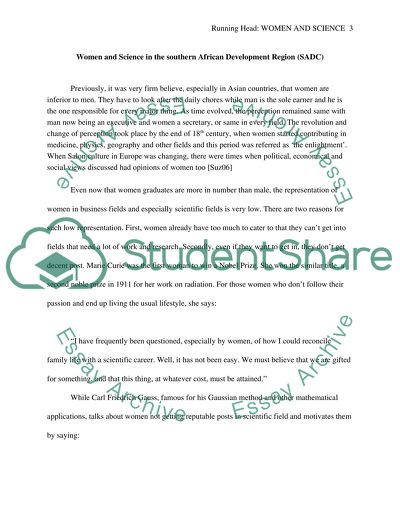Cite this document
(“Women and Science in the southern African Development Region (SADC) Essay”, n.d.)
Retrieved from https://studentshare.org/environmental-studies/1413212-women-and-science-in-the-southern-african
Retrieved from https://studentshare.org/environmental-studies/1413212-women-and-science-in-the-southern-african
(Women and Science in the Southern African Development Region (SADC) Essay)
https://studentshare.org/environmental-studies/1413212-women-and-science-in-the-southern-african.
https://studentshare.org/environmental-studies/1413212-women-and-science-in-the-southern-african.
“Women and Science in the Southern African Development Region (SADC) Essay”, n.d. https://studentshare.org/environmental-studies/1413212-women-and-science-in-the-southern-african.


